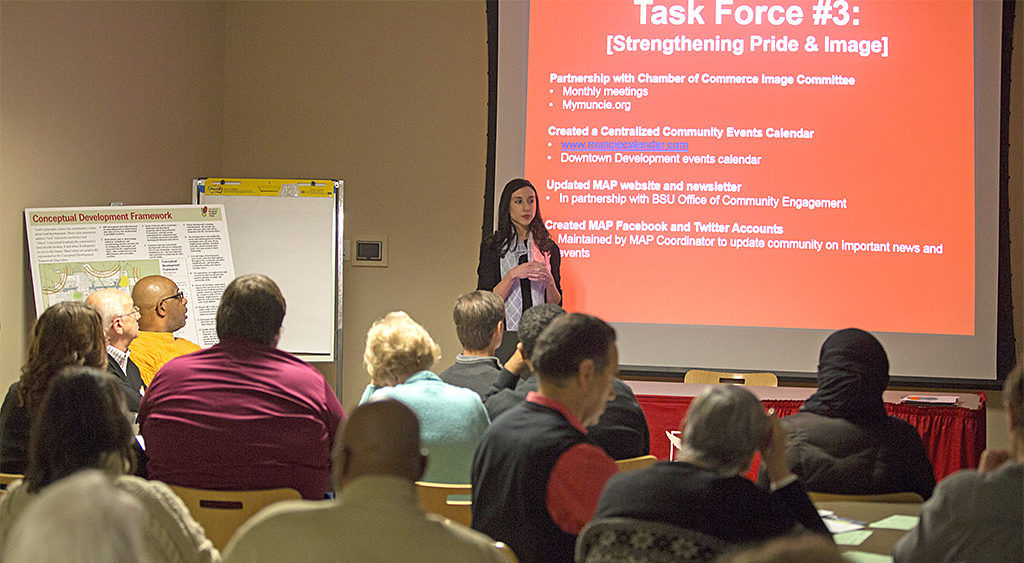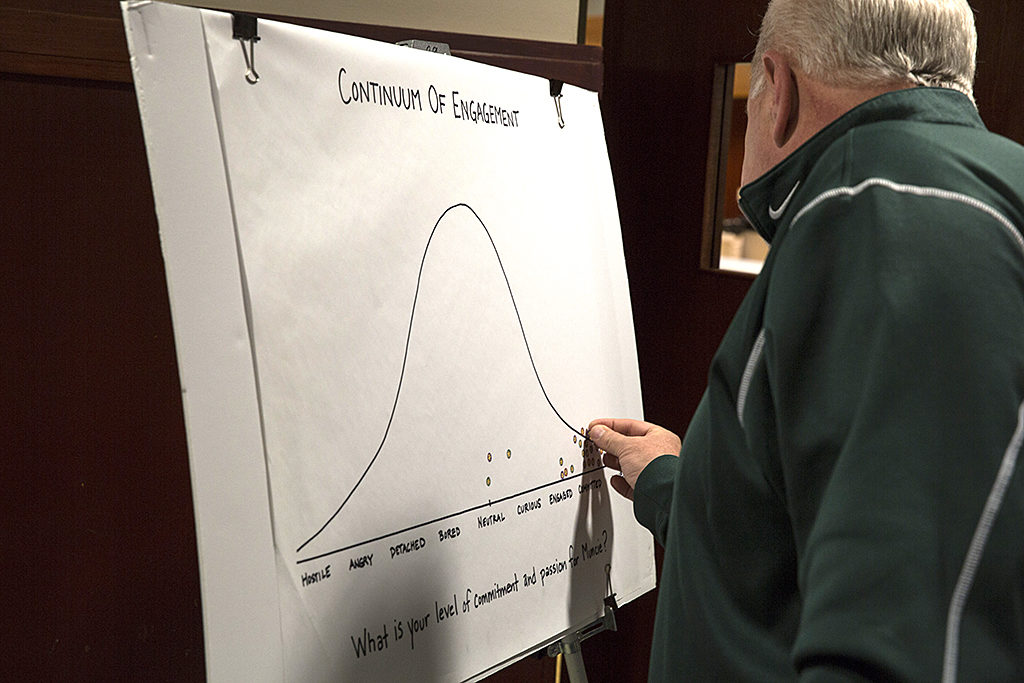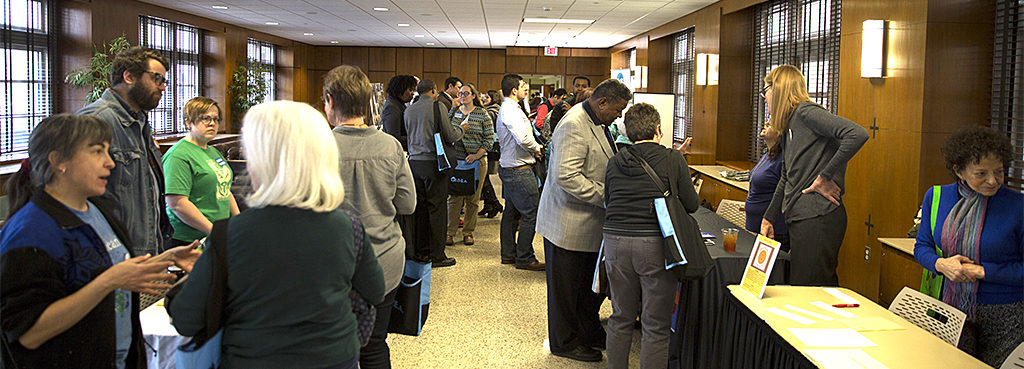By: Emily Royer—
Neighbors picked up conference bags and name tags the morning of March 4th as they checked in for the second Neighborhood I.D.E.A. conference. While they greeted one another, they shared their level of enthusiasm for Muncie by placing a sticker on a “Continuum of Engagement” with options ranging from ‘hostile’ to ‘love’. Unsurprisingly, nearly all the stickers crowded the area between “engaged”, “committed”, and “love” – a great portrait of the average I.D.E.A. attendee.
The sheer number of people crowding the Ball State Student Center hallway on a Saturday morning impressed a Muncie newcomer like myself. Every one of the 133 attendees seemed to know one another. I would have more readily believed the turnout represented a single neighborhood association rather than associations spread throughout the city.
“Muncie is a city full of opportunities for collaboration and development” explained Building Better Neighborhoods Coordinator, Heather Williams, “residents want to make their home a better place to live, and connections form naturally when people work together to make that happen.”
Residents aren’t alone in their dedication to neighborhood investment. Conference partners Muncie Action Plan , Shafer Leadership Academy, Vectren Foundation, the City of Muncie, Ball Brother’s Foundation, Muncie Historic Preservation and Rehabilitation Commission, and Ball State University’s Building Better Neighborhoods are committed to helping residents strengthen their neighborhoods. Ball State University’s Office of Community Engagement provided logistical support for these partners and the conference from beginning to end.
The day began with a welcome address from Mayor Dennis Tyler, and featured a keynote address from members of the Muncie Historic Preservation and Rehabilitation Commission about the results of Scout Muncie, a project aimed to gather information about Muncie’s built environment by surveying every parcel in the city. A mid-day Resource Fair, and the end-of-day door prizes featured more than 20 local organizations and businesses, further demonstrating the community’s excitement for collaboration.
Between these large gatherings, attendees broke out into smaller groups with speakers from a diverse array of backgrounds presenting five tracks: Beautification and Infrastructure, Teamwork and Collaboration, Community Partnerships, Association Development, and Community Plans. The grassroots arts organization We’re Trying Collective; the 8Twelve Coalition, a collaborative group working in Muncie’s southside; and Project for Public Places, a national group promoting placemaking in (you guessed it) public spaces were just a few of the insightful presentations offered that day.
The eagerness of the conference attendees sometimes couldn’t be contained in the room. In the packed Muncie Action Plan (MAP) session, participants sat elbow to elbow as they brainstormed ideas surrounding different tracks, and eventually spilled out into the hall to vote on the results. ”The conversations were so in depth and collaborative, it was hard to cut off to end the session,” said a MAP3 participant, “I really enjoyed the ability to have open discussions with people from all different backgrounds.”

Muncie Action Plan Coordinator, Aimee Fant, introduces the MAP task forces to session participants. Photo provided.
Overall, the conference was successful because of the “great minds present at the event,” as one individual commented. Participants overwhelmingly felt the conference was a wonderful resource for neighborhood development. “[This is a] great opportunity for neighborhoods to network” remarked one attendee. Another agreed, adding “this is so important for our city.”
Conference organizers also felt the conference was a continued success from the year before. “I was so encouraged by the collection of diverse, committed individuals who attended the IDEA Conference,” commented Mitch Isaacs, executive director of Shafer Leadership Academy, “It was incredibly clear that the conference brought together people who shared a mutual love of their community.”





